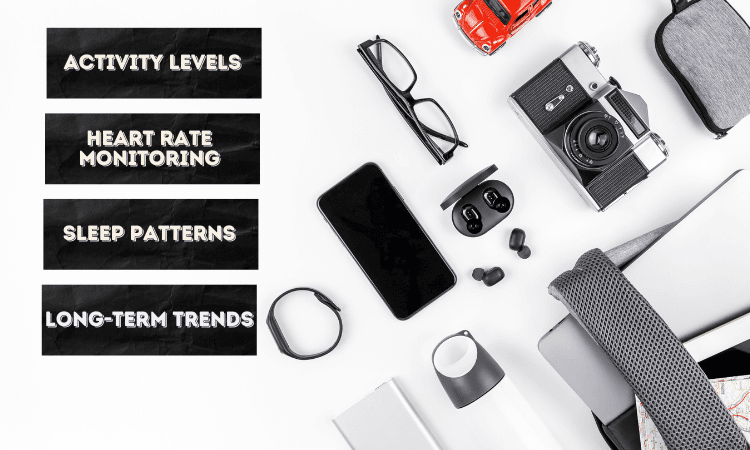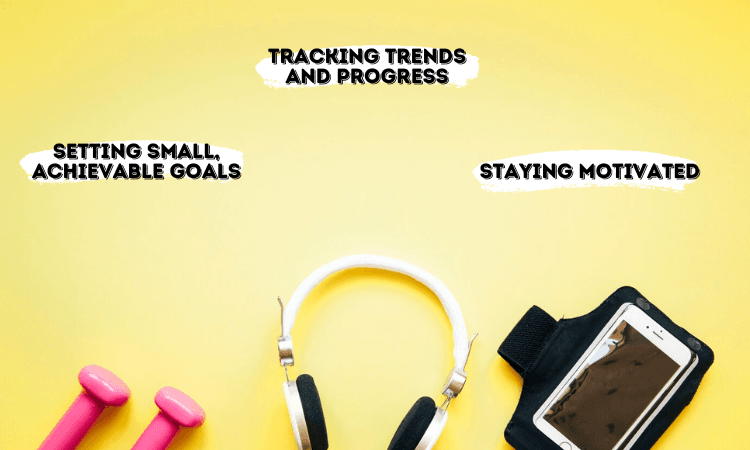Fitness gadgets are excellent tools for monitoring your health and achieving your fitness goals. They offer detailed data on your physical activity, sleep, and more, making it easier to stay motivated and consistent. Let’s explore how to track your progress effectively using these devices.
Choosing the Right Fitness Gadget
Selecting a fitness gadget depends on your personal goals, budget, and desired features.
Identify Your Fitness Goals
The first step is to define what you want to achieve. If your goal is overall activity tracking, devices like the Fitbit Inspire 3 or Xiaomi Mi Band 8 are great options. For athletes focusing on running or cycling, consider a Garmin Forerunner or Coros Pace. Meanwhile, those seeking advanced metrics and multi-sport functionality might prefer the Apple Watch Ultra or Polar Grit X.
Features to Consider
Look for features that align with your needs. Heart rate monitoring, GPS tracking, and sleep analysis are essentials for most users. Durability and water resistance are also important if you swim or exercise outdoors. Devices like the Garmin Venu 2 or Samsung Galaxy Watch 6 stand out for their versatility and robust build quality.
Balancing Budget and Value
Affordable devices, such as the Amazfit Band 7, offer solid tracking for beginners. On the other hand, premium models like the Apple Watch Series 9 or Fitbit Sense 2 provide enhanced functionality, including ECG monitoring and advanced health insights.
Setting Up Your Fitness Gadget
A proper setup ensures your device tracks data accurately and is easy to use.
Initial Setup
After purchasing your fitness gadget, connect it to its companion app, such as the Fitbit app, Garmin Connect, or Apple Health. Input your personal details like age, weight, and fitness goals for more accurate metrics. Most devices guide you through this process step by step.
Learning to Use Features
Explore your device’s features, such as activity reminders, step tracking, and workout modes. For example, the Fitbit Charge 5 lets you set daily step goals, while the Polar Ignite 3 provides guided breathing exercises and sleep tracking.
Integrating with Other Apps
Many gadgets work seamlessly with third-party apps to enhance their functionality. Sync your device with MyFitnessPal for detailed nutrition tracking or Strava for advanced performance analysis. These integrations provide a more holistic view of your fitness journey.
Key Metrics to Track

Fitness gadgets offer a variety of data points, but focusing on the right metrics is key to meaningful progress.
Activity Levels
Track daily steps, calories burned, and active minutes to ensure you meet your activity goals. Devices like the Garmin Fenix 7 provide detailed activity breakdowns, including intensity minutes and personalized coaching.
Heart Rate Monitoring
Monitoring your heart rate helps you optimize workouts and track cardiovascular health. Most gadgets, including the Samsung Galaxy Watch 6 and Fitbit Versa 4, show real-time heart rate and zone information during exercise.
Sleep Patterns
Quality sleep is crucial for recovery and overall health. Fitness trackers such as WHOOP or Fitbit Sense analyze sleep stages and provide recommendations for improvement. These insights can help you adjust your routine for better rest.
Long-Term Trends
Using apps like Fitbit or Garmin Connect, you can analyze long-term trends in your data. For example, you might notice improvements in your resting heart rate or increased daily activity over weeks or months.
Maintaining Long-Term Progress

To maximize the benefits of your fitness gadget, consistency and realistic goals are essential.
Setting Small, Achievable Goals
Start with manageable targets, like walking 8,000 steps a day or completing three workouts per week. Devices like the Fitbit Inspire or Xiaomi Mi Band offer goal-setting features to help you stay on track.
Tracking Trends and Progress
Use your gadget’s reports to monitor changes in your activity, sleep, and overall health. For instance, Garmin’s app provides weekly performance summaries, helping you adjust your routine as needed.
Staying Motivated
Many fitness gadgets include features to keep you engaged, such as badges, challenges, or leaderboards. Compete with friends or join online communities to make fitness tracking more enjoyable.
Overcoming Common Challenges
Fitness gadgets can be incredibly helpful, but they’re not without challenges. Here’s how to address common issues.
Ensuring Accuracy
Some gadgets may overestimate or underestimate activity metrics, like steps or calories burned. To improve accuracy, wear your device correctly and calibrate it during setup. Models like the Garmin Forerunner and Polar Ignite are known for their precision.
Staying Consistent
It’s easy to lose motivation, but building a routine helps. Use your gadget’s reminders or schedule regular check-ins to review your progress. Gamified features like Fitbit’s streak tracking can also encourage consistency.
Balancing Technology and Intuition
While gadgets provide valuable insights, it’s important to listen to your body. Use the data as a guide but remain mindful of how you feel during workouts or recovery. For example, if you’re overly tired despite meeting your sleep goals, you may need additional rest.
Conclusion
Fitness gadgets are powerful tools for tracking and improving your health, but their real value comes from consistent use and thoughtful goal-setting. Choose a device that aligns with your needs, focus on key metrics, and integrate your gadget into your daily routine. Whether you’re using a budget-friendly option like the Amazfit Bip or a high-end device like the Apple Watch Ultra, these tools can help you stay on track and reach your fitness goals.
By combining the insights from your fitness gadget with lifestyle changes, you can create a sustainable, rewarding fitness journey.



